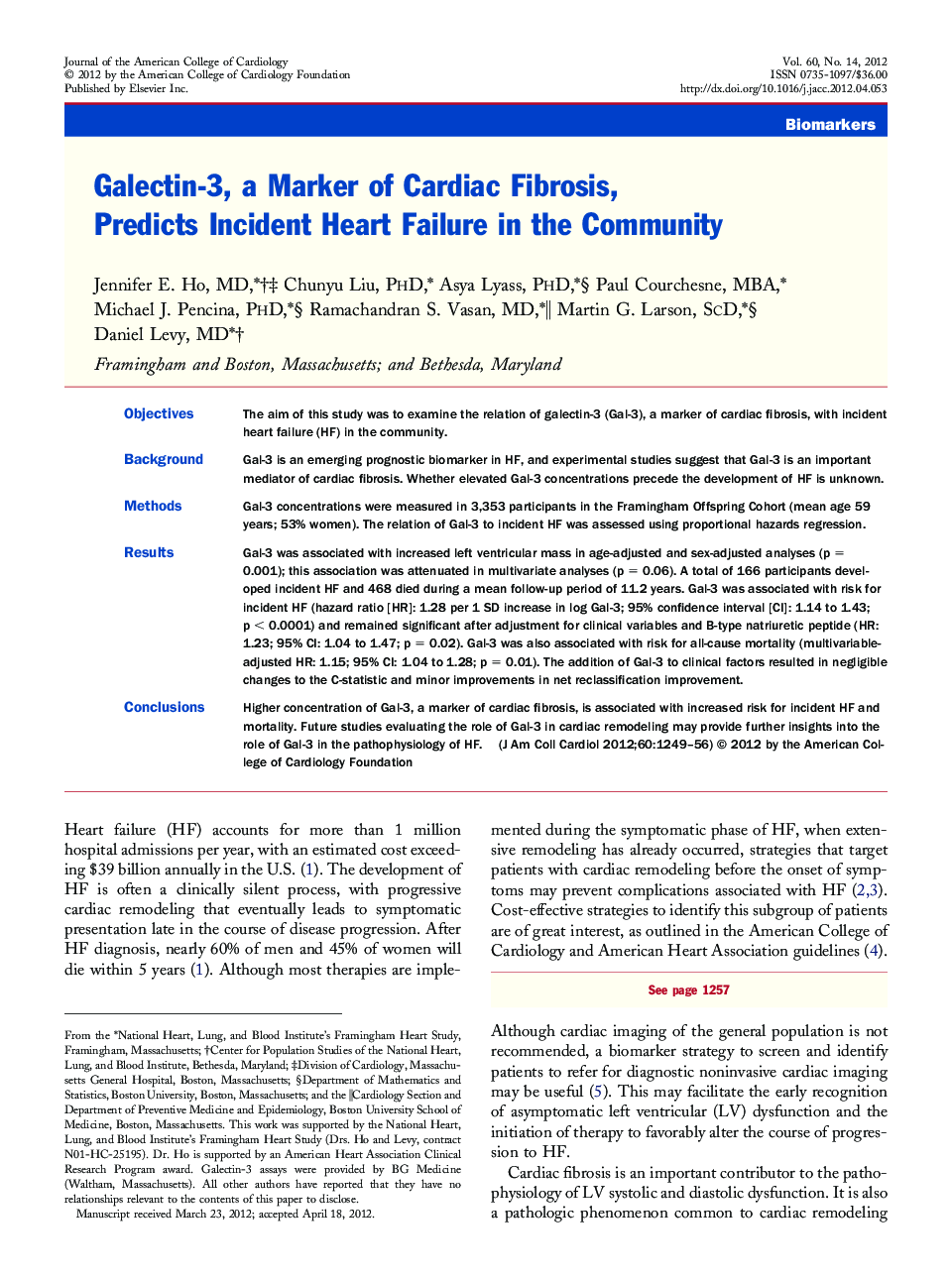| Article ID | Journal | Published Year | Pages | File Type |
|---|---|---|---|---|
| 2946988 | Journal of the American College of Cardiology | 2012 | 8 Pages |
ObjectivesThe aim of this study was to examine the relation of galectin-3 (Gal-3), a marker of cardiac fibrosis, with incident heart failure (HF) in the community.BackgroundGal-3 is an emerging prognostic biomarker in HF, and experimental studies suggest that Gal-3 is an important mediator of cardiac fibrosis. Whether elevated Gal-3 concentrations precede the development of HF is unknown.MethodsGal-3 concentrations were measured in 3,353 participants in the Framingham Offspring Cohort (mean age 59 years; 53% women). The relation of Gal-3 to incident HF was assessed using proportional hazards regression.ResultsGal-3 was associated with increased left ventricular mass in age-adjusted and sex-adjusted analyses (p = 0.001); this association was attenuated in multivariate analyses (p = 0.06). A total of 166 participants developed incident HF and 468 died during a mean follow-up period of 11.2 years. Gal-3 was associated with risk for incident HF (hazard ratio [HR]: 1.28 per 1 SD increase in log Gal-3; 95% confidence interval [CI]: 1.14 to 1.43; p < 0.0001) and remained significant after adjustment for clinical variables and B-type natriuretic peptide (HR: 1.23; 95% CI: 1.04 to 1.47; p = 0.02). Gal-3 was also associated with risk for all-cause mortality (multivariable-adjusted HR: 1.15; 95% CI: 1.04 to 1.28; p = 0.01). The addition of Gal-3 to clinical factors resulted in negligible changes to the C-statistic and minor improvements in net reclassification improvement.ConclusionsHigher concentration of Gal-3, a marker of cardiac fibrosis, is associated with increased risk for incident HF and mortality. Future studies evaluating the role of Gal-3 in cardiac remodeling may provide further insights into the role of Gal-3 in the pathophysiology of HF.
